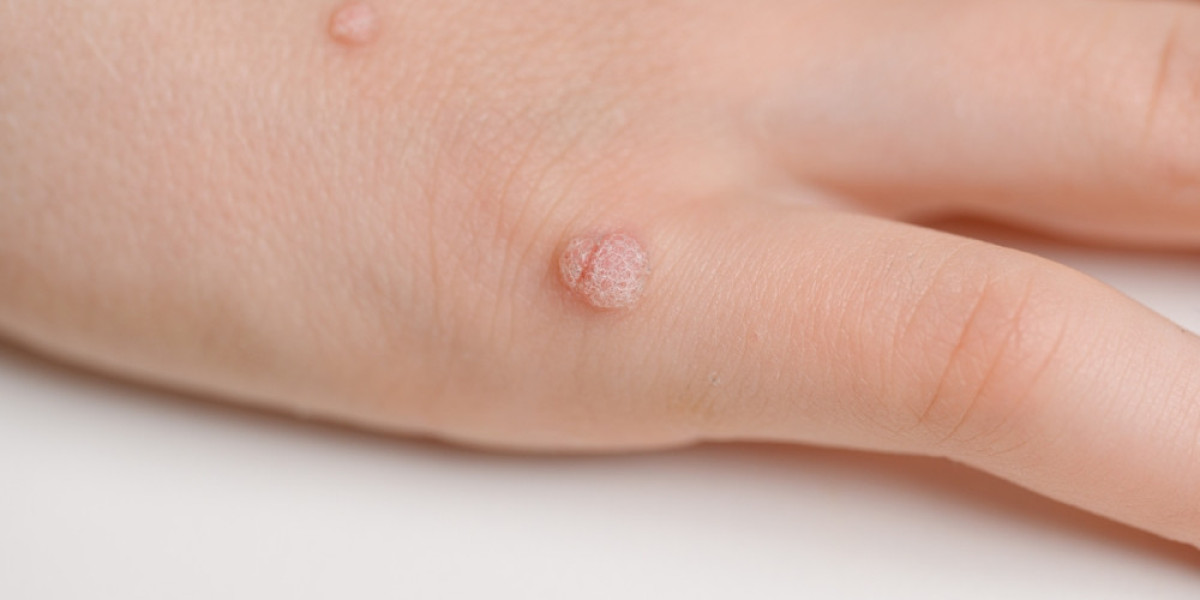Warts, those small, rough growths that can appear on various parts of the body, are more than just a cosmetic nuisance. They are caused by the human papillomavirus (HPV) and can be persistent and frustrating to treat. While warts can appear anywhere, common locations include the hands, feet, and even around fingernails and toenails, known as periungual warts.
Fortunately, there are numerous ways to treat warts, ranging from over-the-counter solutions to medical procedures and natural remedies. Ongoing clinical trials for warts are constantly expanding treatment options, aiming to provide more effective and quicker ways to eliminate these stubborn skin lesions. This post will explore both medical and natural approaches to wart removal, helping you make informed decisions about which treatment might work best for you.
What Are Warts?
Warts are caused by the human papillomavirus (HPV), a virus with over 100 strains. While the virus is mostly harmless, certain strains can lead to wart formation. HPV enters the body through tiny cuts or breaks in the skin, causing rapid skin cell growth that leads to the characteristic bump or growth. Warts can spread through direct skin contact or by touching objects that have come into contact with someone else's wart.
There are several types of warts, including:
Common warts:
Typically found on fingers and hands, they have a rough, grainy appearance.
Plantar warts
Found on the soles of the feet, these can be painful due to pressure when walking.
Flat warts:
Smaller and smoother, these often appear in large numbers on the face, arms, or legs.
Filiform warts:
Usually found on the face or neck, they are long and thin.
Periungual warts:
These grow around fingernails or toenails and can be particularly difficult to treat due to their location.
Understanding the type of wart you're dealing with is the first step in choosing an appropriate treatment option.
Medical Treatments for Warts
For those seeking quick and effective removal, medical treatments are often the most reliable option. While no treatment guarantees complete wart eradication in one go, medical interventions can significantly speed up the process and reduce the likelihood of recurrence.
1. Cryotherapy (Freezing)
Cryotherapy is one of the most common medical treatments for warts. In this procedure, a healthcare professional applies liquid nitrogen to the wart, freezing the tissue. The wart and surrounding skin will blister and eventually fall off, typically within a week or two. This treatment is effective but may require several sessions for larger or more stubborn warts.
2. Salicylic Acid
Over-the-counter treatments often contain salicylic acid, which gradually dissolves the wart. While these treatments can be applied at home, they work best on small, common warts. The acid softens the wart, allowing dead skin to be filed away. Consistent daily use over several weeks is typically required for the wart to disappear.
3. Laser Therapy
Laser treatments are available for warts that don't respond to other treatments. This approach uses an intense beam of light to destroy the blood vessels feeding the wart, causing the wart tissue to die. Laser therapy can be painful and may cause scarring, so it’s usually reserved for stubborn or recurring warts.
4. Immunotherapy
Immunotherapy is an advanced option for persistent warts, especially for those with multiple warts that do not respond to conventional treatments. This involves stimulating the body's immune system to fight off the virus causing the wart. One method includes injecting a substance like Candida antigen into the wart, prompting the immune system to attack both the antigen and the wart.
5. Chemical Peels
In some cases, doctors may use stronger peeling agents such as trichloroacetic acid (TCA) to remove warts. This treatment is similar to salicylic acid but more powerful. The wart is gradually eroded after repeated applications, though it may cause some irritation or discomfort.
Natural Remedies for Warts
For those who prefer a more holistic approach, there are a variety of natural remedies that have been traditionally used to treat warts. While scientific evidence is limited for some of these methods, anecdotal reports suggest they may help reduce wart size or eliminate them over time.
1. Apple Cider Vinegar
Apple cider vinegar is one of the most popular natural remedies for warts. The acidic nature of the vinegar is believed to destroy wart tissue in a manner similar to salicylic acid. Soak a cotton ball in apple cider vinegar, apply it to the wart, and secure it with a bandage. Leave it on overnight and repeat daily until the wart disappears.
2. Garlic
Garlic has antiviral and antibacterial properties that may help fight the HPV virus. Crush a clove of garlic and apply the paste directly to the wart, covering it with a bandage. This treatment can be repeated daily until the wart begins to shrink. Some people find garlic irritating to the skin, so it’s best to monitor for any adverse reactions.
3. Banana Peel
Another popular home remedy is using banana peel. The inside of the peel contains enzymes and compounds that some believe can soften and eradicate the wart. Cut a small piece of banana peel and tape it over the wart, leaving it on overnight.
4. Tea Tree Oil
Tea tree oil is known for its antiviral and antiseptic properties, which may help treat warts. Apply a few drops of tea tree oil directly to the wart once or twice daily. This treatment may take several weeks, but many people report success with consistent use.
5. Aloe Vera
Aloe vera is soothing and has natural healing properties, which may help with irritated or inflamed warts. Applying aloe vera gel to the wart daily may help reduce its size and promote skin healing.
Preventing Warts
Preventing warts can be challenging, especially since HPV is highly contagious. However, there are a few steps you can take to reduce the likelihood of getting warts:
Avoid direct contact:
Do not touch someone else's wart or share personal items such as towels or razors.
Keep skin clean and dry:
Warts thrive in moist environments, so it’s essential to keep your skin dry, especially in areas prone to warts like the hands and feet.
Use protection in public places:
Wear flip-flops or sandals in public showers, locker rooms, and around pools to prevent plantar warts.
When to See a doctor?
If over-the-counter or natural remedies don’t work, or if the wart is painful, growing, or bleeding, it’s important to consult a healthcare professional. Some warts, particularly periungual warts, can become embedded around the nail and cause significant discomfort. Additionally, those with weakened immune systems may have a harder time fighting off HPV and could require more aggressive treatments.
Read Also: Tips for Managing Long-Term Symptoms of Chronic Urticaria
Conclusion
If you're struggling with periungual warts specifically, professional medical treatments may be necessary to get relief from periungual warts. Since they can be more resistant to traditional remedies and often recur. Warts, while common, can be stubborn and hard to treat. Fortunately, with a range of medical and natural remedies available, it is possible to find an effective solution. Whether you opt for cryotherapy, salicylic acid, or natural treatments like apple cider vinegar or tea tree oil, persistence is key. Ongoing research and clinical trials continue to expand our knowledge of how to treat warts effectively, offering hope for those with particularly stubborn cases.








